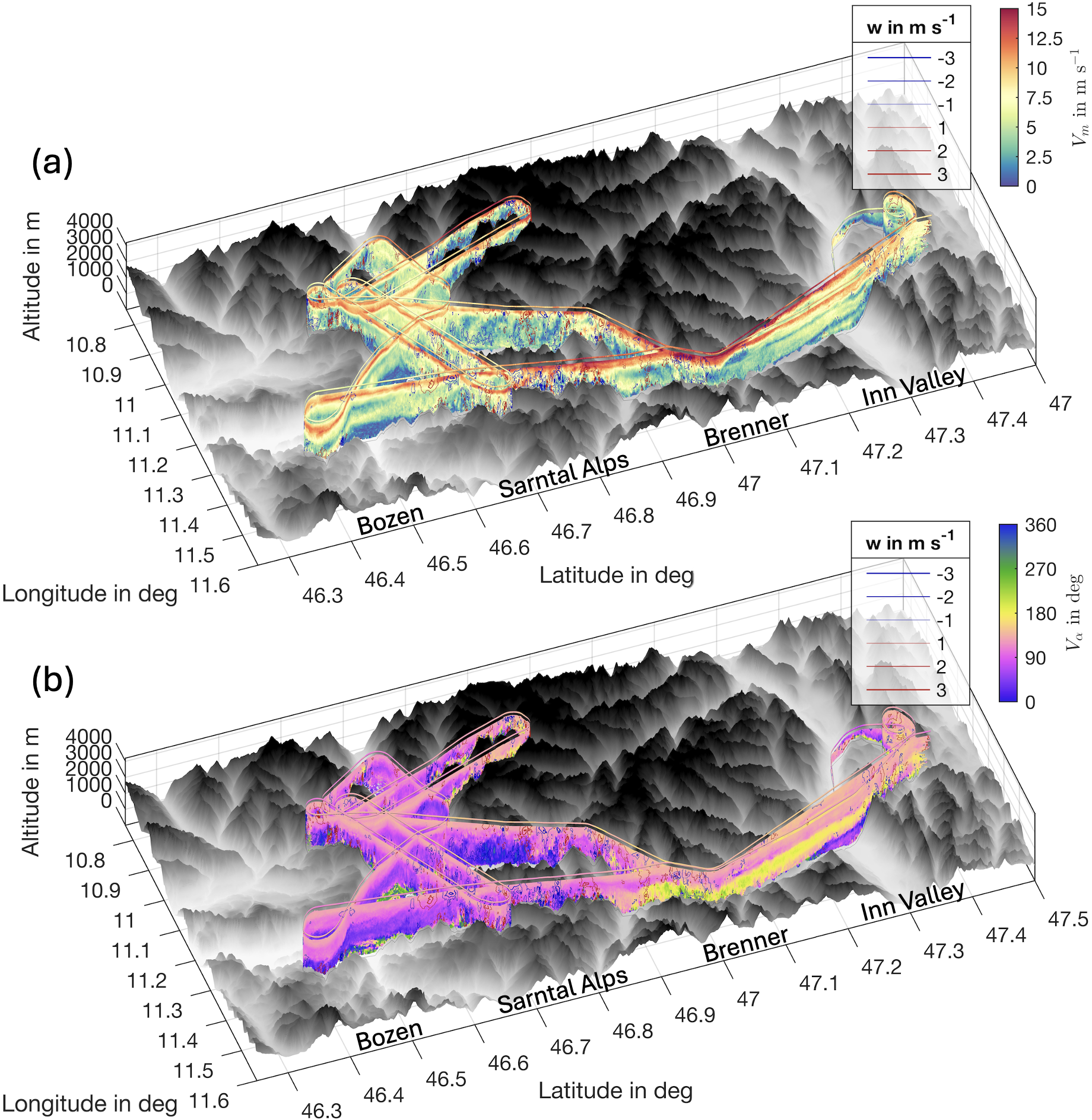LInking VAlley flow and VERTical EXchange in complEX terrain (LIVAVERT(EX)2)

AIRflows measurements across the Alpine Crest Target Area on 18 September 2024. Shown are (a) wind speed and (b) wind direction, the vertical wind is indicated through contours. AIRflows measurements are able to capture meso-scale variation of the flow, while at the same time resolving small scale turbulent fluctuations. Picture rights: Philipp Gasch.
Quantifying the exchange of mass, momentum and energy between the earth’s surface and the atmosphere is pivotal for the understanding and prediction of many weather and climate processes. Understanding exchange in complex terrain requires knowledge of multi-scale flow processes and their interaction. The most prominent manifestation of vertical exchange is the initiation of deep convection.
So far, our capabilities to observe the spatial variability of flow and exchange, especially in relation to convection, are limited. The LIVAVERT(EX)2 project aims to create a breakthrough in observing multi-scale flow and exchange processes through airborne Doppler lidar (ADL) measurements of unprecedented high resolution.
LIVAVERT(EX)2 deploys a novel ADL – ‘AIRflows’ – for the first extended measurements in complex terrain. The AIRflows system was recently developed by the Karlsruhe Institute of Technology (KIT) and flies onboard the TU Braunschweig Cessna F406 research aircraft (https://www.imk-tro.kit.edu/english/12875.php).
Using AIRflows, the first-ever high-resolution 3D wind observations will be available, providing spatially resolved insight into valley wind systems and vertical exchange. The proposed measurements form an integral part of the TEAMx campaign, which encompasses the most extensive meso-scale GDL network available up to date, as well as additional airborne measurements. Through linking ADL with GDL and airborne in-situ observations of valley flow, both the ADL wind profiling accuracy and the volume flux methodology can be validated and utilized. The focus region is the Sarntal Alps, a local hotspot of CI. Combining flux budget and direct vertical exchange observations will allow a more quantitative insight into valley flow and its relation to convective initiation (CI) over surrounding mountains than ever before. Overall, the expected results will be crucial to improve our understanding and the prediction of atmospheric processes in complex terrain.
LIVAVERT(EX)2 is funded by the Deutsche Forschungsgemeinschaft (DFG, German Research Foundation) under Grant 563995063. The project runs from July 2025 to June 2028 and is led by Philipp Gasch at the Institute of Meteorology and Climate Research Troposphere Research at the Karlsruhe Institute of Technology (KIT).
